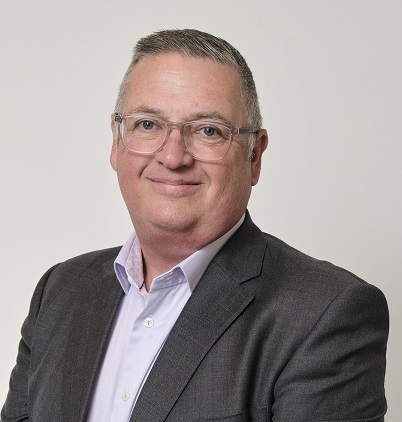The Connected Home

Centrica Home Solutions purely focuses on satisfying the changing needs of the customer, and as the rise of smart home devices continues to increase, those needs are constantly adapting and evolving. Peter Simon, Managing Director, discusses the connected home and how the advent of smart technology could impact on home insurance.
Q. When it comes to smart home devices and new data sources arising from devices, is the industry being innovative enough?
A. We already have a thriving and innovative ecosystem that allows customers to control heating, lighting, and appliances remotely. Active heating thermostats enable customers to save energy by only heating the rooms they are using – it’s just one of the many ways we’re working towards a lower-carbon future. These technologies can be linked to boiler repair, identify unusual water flow or leaks. They include motion sensors and cameras to help customers always keep an eye on their homes.
Our energy heritage, our scalable and reliable tech platform, and the installation expertise of our 8000 engineers gives us a potent combination of innovative, future-facing energy and connected home business working hard to meet the changing needs of our customers.
Currently, in the market, research tells us that four in ten people have a smart home device and the trend shows that people are looking for more ways to use voice to control devices via their smartphones.
Research tells us that four in ten people have a smart home device and the trend shows that people are looking for more ways to use voice to control devices via their smart phone.
Such technologies also have the potential to make our homes cheaper to insure too. Flow sensors that detect a leaking pipe, for example, or devices that can shut off appliances accidentally left on, could all reduce the risk of an insurance claim. Home monitoring and a storage subscription service that allows customers to support insurance claims with downloadable video, or to access professional support and advice from engineers to fix a small boiler issue, is also a big area of growth for customers looking for potential insurance savings and greater peace of mind. By integrating these devices with an insurance offer, it will soon be possible to produce personalised policies based on risk profiles for individual homes.
Q. As more homes become connected, how will home insurance need to adapt?
A. The use of connected, smart home technology to provide a monitoring solution is a key area of future smart home growth. Research by Berg Insight reveals that the number of households in Europe using smart technology is expected to grow by 54% between now and 2020. In North America, with that higher percentage of households that already have smart home technology, the growth in adoption is expected to rise by 31% over the same period. We’re confident that innovation will drive a change in the traditional insurance category. For example, diagnostics that can help detect when a fridge might become faulty or innovation that could alert to the battery performance of an electric vehicle are all opportunities.
The use of connected, smart home technology to provide a monitoring solution is a key area of future smart home growth.
By integrating these devices with an insurance or warranty offer, it will soon be possible to produce personalised policies based on risk profiles for individual homes. As the insurance industry moves towards embracing smart home tech, the benefits are in the peace of mind for homeowners and the savings they will find with lower insurance premiums. It is undoubtable that these savings will drive greater interest in smart home technology too as a result.
Q. What solutions are today’s consumers looking for from their smart homes?
A. The rising uptake of smart home devices has seen nearly every category of connected technology increase in ownership over the past year. Our own research, and that from several industry experts, suggests that most consumers in the UK start their smart home journey by remotely controlling their heating, remotely monitoring their home, or just looking for added comfort through device automation.
We’re conscious Centrica provides solutions for customers that go beyond just the devices and the technology, so we’re moving beyond products to services that help people manage the home easily, in particular, the way they use and reuse energy that is both cost-efficient and has a lower carbon footprint.
Within devices, however, security and diagnostics are big trends we’re confident will take off in the future with more robust and intelligent ways to monitor our homes.
Q. How is data and analytics helping home insurers put customers first?
A. There is no doubt that smart home ecosystems will give us greater control over our lives, save us money and provide peace of mind. But with nearly all disruptive technologies, there are some obstacles and preconceptions to overcome. For example, the smart devices in our homes will need to share data with insurance companies about the way we live, raising issues around privacy. So, we take care to ensure people are reassured that their data is secure and never shared inappropriately. Our data and analytics mean we are uniquely placed, therefore, to provide a range of services that can not only detect problems before they can become bigger issues, but also provide solutions if things go wrong. So, for example, powerful algorithms to alert you when to check for a water leak, or that flag motion activity that’s unusual, or help you schedule preventative maintenance for expensive, critical assets, such as a boiler. Lower risk levels translate into lower premiums, claims can be reduced, insurers ‘reward’ customers with the right behaviours, personalising their products even more and create offers for new customers that are affordable and attainable.
There is no doubt that smart home ecosystems will give us greater control over our lives, save us money and provide peace of mind. But with nearly all disruptive technologies, there are some obstacles and preconceptions to overcome.
Q. How can we better manage data in a Hyperconnected era?
A. We invest heavily in ensuring our customers’ data is secure and safe and we recognise how the IoT will become more common in our homes, making people’s lives easier and more enjoyable.
As people entrust an increasing amount of personal data to online devices and services, the cybersecurity of these products is now as important as the physical security of our homes. We’re proud to have been one of the first companies to sign up to a pledge by the UK Government advocating for strong security to be built into internet-connected products by design. The Code of Practice for Consumer IoT Security supports all parties involved in the development, manufacturing, and retail of consumer IoT.
All our data traffic, including user credentials and video feeds, is secured with end-to-end encryption (HTTPS). So, for example, with our indoor and outdoor cameras, we use both client and server-side security certificates to validate the identity of both the camera and server, which prevents unauthorised access to data. We robustly test all our devices as well as supporting web and cloud services using in-house teams and third-party experts to ensure that we proactively identify any security issues prior to launching our products, as well as maintaining regular routine tests once they are in production.
Q. What would be the commercial impact of integrating smart technology and devices?
A. Centrica Home Solutions is growing in the number of customers and the number of devices and services sold year on year and is currently the market-leading connected home business in the UK. We know our customers want more than a clever piece of tech and are interested in technology that can help them solve a problem, that’s important to them.
However, our business is more than just clever devices. It comes with a complete package of services that are of benefit. We know we can give people control over their use of energy, keep costs down and lower their carbon footprint. Today the combination of home energy management, home remote diagnostics and monitoring, provide our 1.7million customers with a complete service and end to end technology solutions that are designed to make daily living easier, save money and make energy usage more efficient and to increase the options available for people to tailor-make the way their homes work for them.
We provide solutions for customers through the support of our professional teams of expert installers and engineers – we can not only install the devices but also fix and repair any issues to provide an extra level of peace of mind if the boiler stops working or there is a hidden leak.
And with the growing use of voice activation, IFFT (Actions) and Alexa and Google Home, this makes using our technology even simpler.
Q. Will smart technology bring down the cost of insurance premiums?
A. Price is a challenge, although some providers have considered offering devices free of charge. The fear is that what comes free may not be valued.
Then there is the issue of compatibility and integration with such a variety of connected devices from multiple providers. Whilst much of the software to utilise and control these devices is open source, and compatibility with the large Home Control Apps is increasing, there are still issues connecting with some provider technologies. Insurers will also have to overcome the resistance of makers of alarms, thermostats and even digital locks to open their software to allow them to be used for the purpose of insurance risk assessment. Whilst the customer will be able to create a single interface for multiple device providers, using those propositions for the benefit of insurance remains a distinct challenge.
We believe in the integration of connected devices and related services into a single protection product. Smart sensors monitor the home, helping to detect problems and protect the home. Devices are controlled from an App. Subscription-based monitoring and storage is provided. If needed, repair and maintenance services are also included to help customers solve minor problems and keep the home running smoothly. And finally, a comprehensive buildings and contents insurance safety net is in place should the worst happen.
Centrica is already on this journey with Boiler IQ from British Gas, giving total peace of mind. A device constantly monitors the boiler’s performance and when it stops generating heating or hot water. British Gas will proactively contact a customer in the event of failure to arrange an engineer to fix it. And to the benefit of both the customer and company, the information received can ensure that the engineer will arrive with the correct parts to ensure the repair is completed.
Q. How are customer habits changing?
A. As the insurance industry moves towards embracing smart home tech, the benefits are in the peace of mind for homeowners and the savings they will find with lower insurance premiums. It is undoubtable that these savings will drive greater interest in smart home technology too as a result. We want to make people’s lives easier, by providing seamless, time-saving services that are easy to use and help save them money. Understanding and satisfying consumer needs is critical to our success. By adding value, reducing the cost of cover and changing how home protection solutions are viewed altogether, it could be as revolutionary as Uber.
Peter Simon is the Managing Director of Centrica Home Solutions.
Click here for more information about the future of AI and insurance



